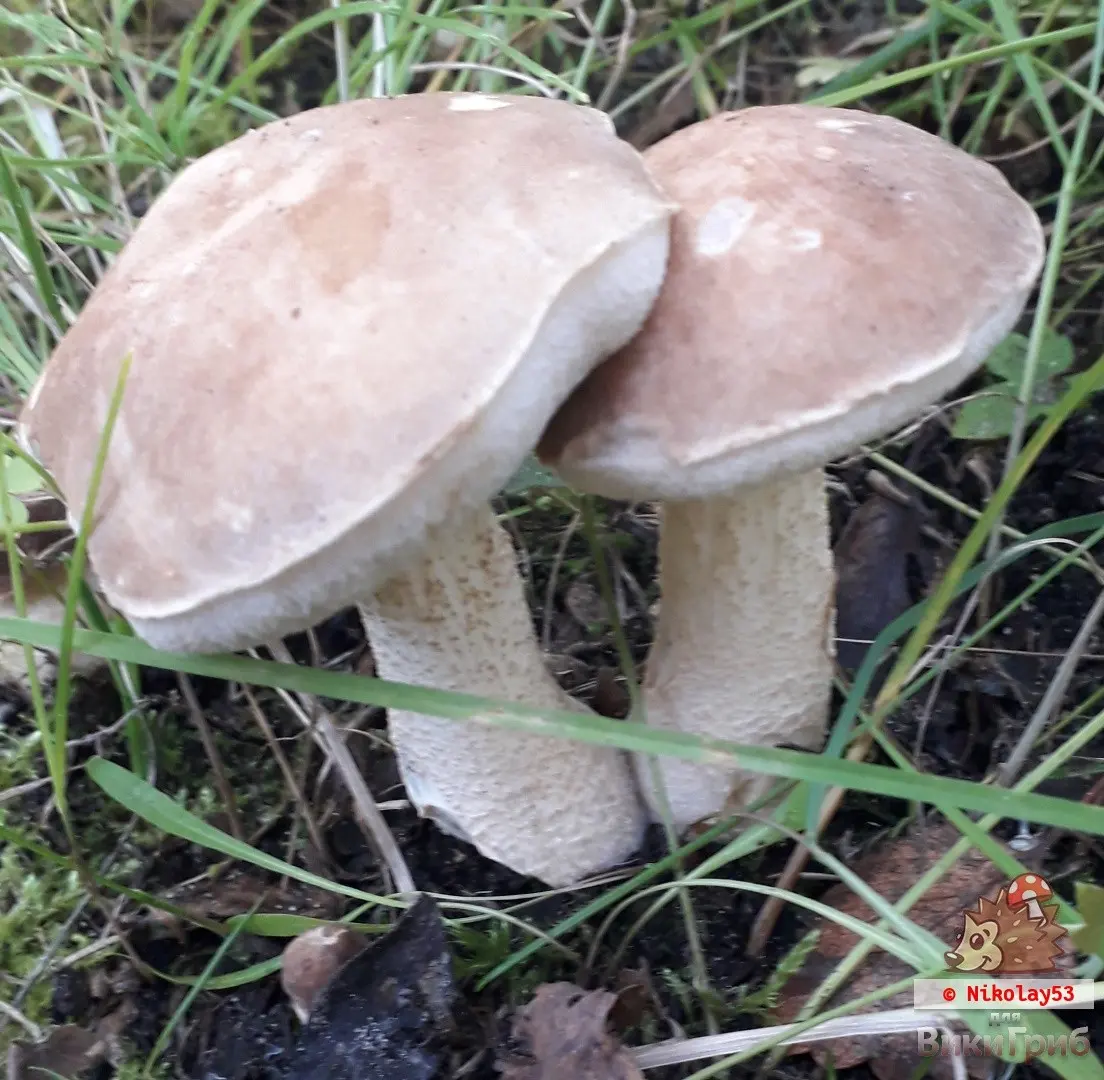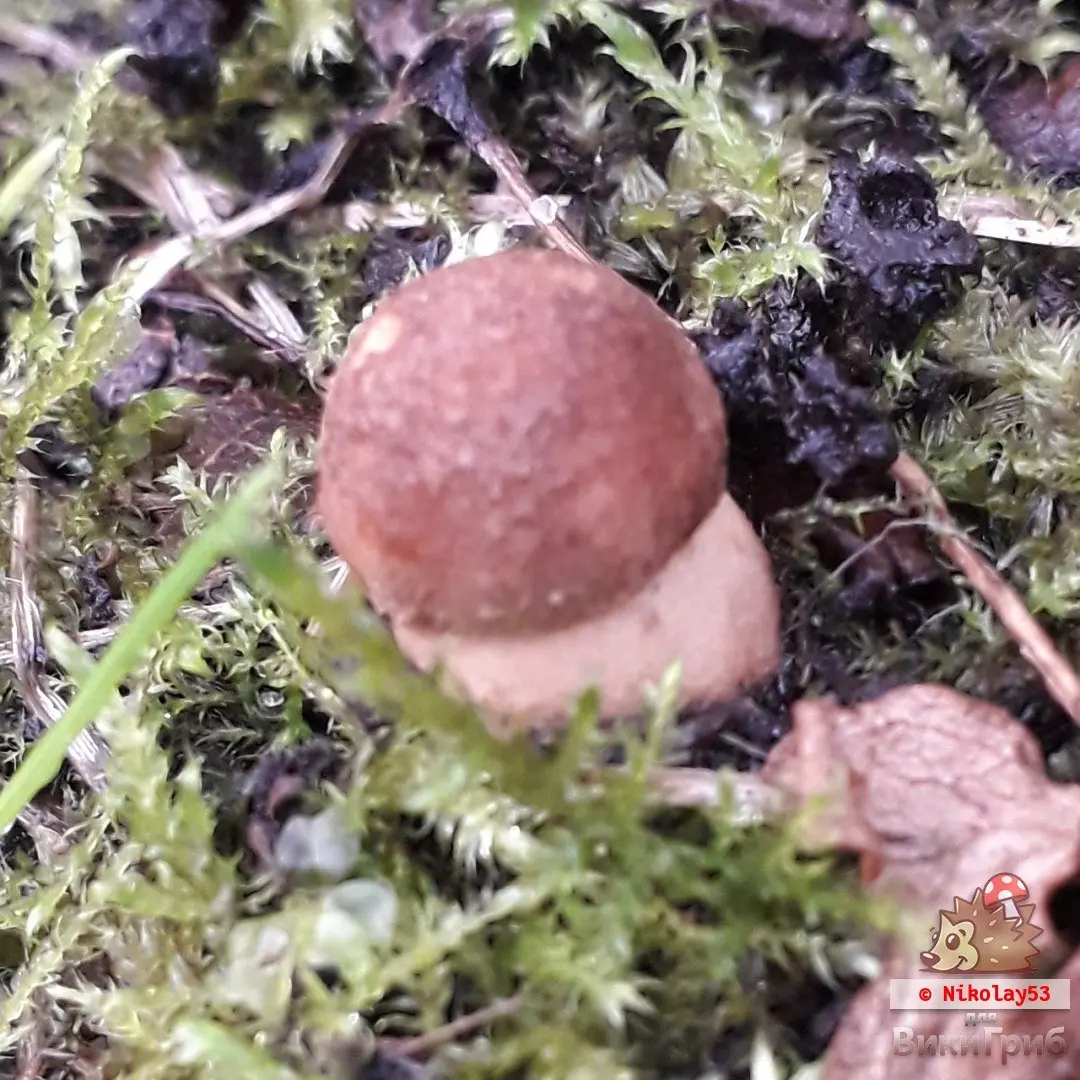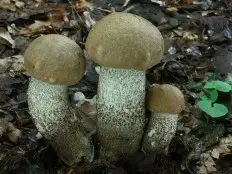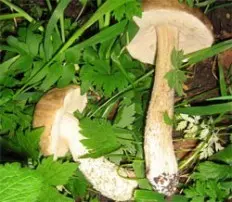Contents
Tundra boletus (Leccinum rotundifoliae)
- Division: Basidiomycota (Basidiomycetes)
- Subdivision: Agaricomycotina (Agaricomycetes)
- Class: Agaricomycetes (Agaricomycetes)
- Subclass: Agaricomycetidae (Agaricomycetes)
- Order: Boletales (Boletales)
- Family: Boletaceae (Boletaceae)
- Rod: Hemileccinum
- Type: Leccinum rotundifoliae (Tundra boletus)
:
- A beautiful bed
- A beautiful bed f. brown disc
- Leccinum scabrum subsp. tundra

Leccinum rotundifoliae (Singer) AH Sm., Thiers & Watling, The Michigan Botanist 6:128 (1967);
The tundra boletus, having the proportions characteristic of the common boletus, has a much smaller size. The fruit body, like other boletus, consists of a stem and a cap.
head. At a young age, spherical, with edges pressed to the leg, as it grows, it becomes convex hemispherical and, finally, pillow-shaped. The color of the skin of the cap is cream to brown, lightening to light brownish, almost white with age. The cap diameter rarely exceeds 5 cm.

Pulp mushroom is quite dense and fleshy, almost like a harsh one, white, does not change color when damaged, has a pleasant delicate mushroom aroma and taste.
Hymenophore fungus – white, tubular, free or adherent with a notch, does not change color when damaged, easily separated from the cap in old age. The tubes are long and uneven.

spore powder white, light grey.
Leg reaches 8 cm in length, up to 2 cm in diameter, tends to expand in the lower part. The color of the legs is white, the surface is covered with small scales of white, sometimes cream color. Unlike other types of boletus, the flesh of the stem does not acquire the characteristic fibrous “woodiness” with age.

Tundra boletus (Leccinum rotundifoliae) grows in the tundra zone, is less common in the middle lane, forms mycorrhiza (fully justifying its name) with birches, mainly dwarf ones, and is also found next to Karelian birches. Often grows in groups under the creeping branches of dwarf birch in the grass, due to its size it is hardly noticeable. Fruiting is not very abundant, depending on the weather conditions of the season, from mid-June until the first frost.

Подберезовик корековатый
It has a larger size, darker scales on the stem and blue flesh on the cut, in contrast to the tundra boletus, the color of the flesh of which does not change.

Marsh boletus (Leccinum holopus)
It has a much more loose and watery pulp and a darker hymenophore, it also differs in its place of growth.
Tundra boletus (leccinum rotundifoliae) is an edible boletus mushroom of category II. Thanks to the pulp that does not change color, a delicate mushroom aroma and excellent taste, many mushroom pickers “hunting” in the tundra are valued on a par with ceps. They note the only drawback – a rarity. In cooking, it is used fresh, dried and pickled.









